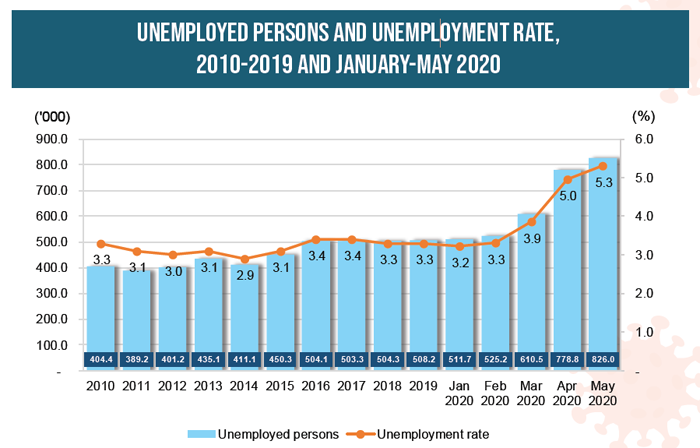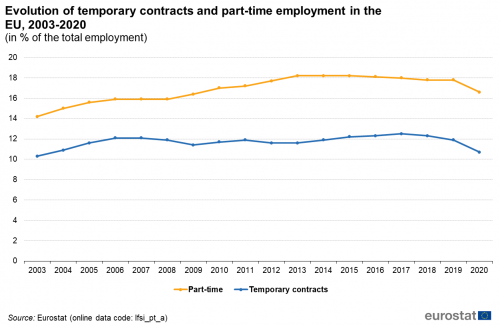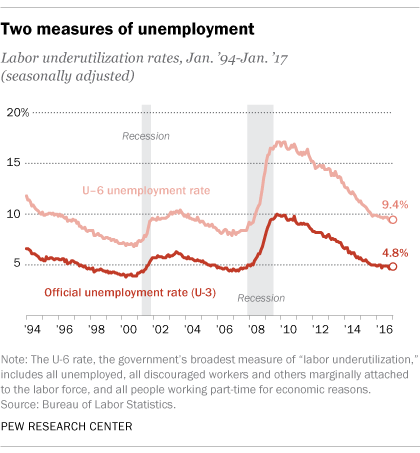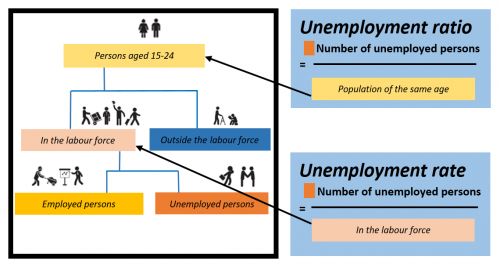Employment To Population Ratio Def
4 This feature provides the employment-population ratio a degree of stability because movement in and out of the labor force only registers in the. 242 rijen Employmentpopulation ratio seasonally adjusted.

Department Of Statistics Malaysia Official Portal
The economies with low ratios are generally situated in the Middle East and North Africa.

Employment to population ratio def. The chart has 1 X axis displaying categories. This includes people who have stopped looking for work. According to the 2010 Survey on Economic Activities of Disabled Persons based on registered persons with disabilities aged 15 or older the employment-to-population ratio of persons with disabilities in Korea was at 360 percent and their unemployment rate was at 66 percent The national employment-to-population ratio and unemployment rates were at 600 percent and 32 percent respectively.
Employment to population ratio 15 total modeled ILO estimate International Labour Organization ILOSTAT database. Employment to population ratio 15 female modeled ILO estimate from The World Bank. The international labour organization States that a person is considered employed if they worked at least 1 hour in gainful.
The employment rate as defined by OECD is the employment-to-population ratio the number of people of working age in the population who are employed. Or two or three. The employment-to-population ratio is defined as the proportion of a countrys working-age population that is employed.
Employment- to-population ratios are of particular interest when broken down by sex as the ratios for men and women can provide information on gender differences in labour mark et activity in a given country. The employment-population ratio is calculated as. Created with Highcharts 822.
For many countries it ranks in importance with the unemployment rate. However it should also be emphasized that this indicator has a gender bi as in. Data retrieved on June 15 2021.
Employed Civilian Noninstitutional Population x 100. Line chart with 8 lines. Employment rates are defined as a measure of the extent to which available labour resources people available to work are being used.
Click and drag within the chart to zoom in on time periods. As an indicator the employment-to-population ratio provides information on the ability of an economy to create jobs. The chart has 1 Y axis displaying Percent.
According to the International Labour Organization people are considered employed if theyve had an hour or more in gainful employment in the most recent week. This indicator is expressed as a percentage. The flip side of that figure is the employment rate.
One way to track that stat is the employment-to-population ratio. They are calculated as the ratio of the employed to the working age population. The employment-population ratio represents the number of employed people as a percentage of the civilian noninstitutional population.
The organization for economic cooperation and development defines the employment rate as employment. Employment-to-population ratio in the world In general a high ratio is considered to be above 70 percent of the working-age population whereas a ratio below 50 percent is considered to be low. Concepts Working-age population is determined on the basis of national circumstances but in most countries the working-age population is defined as persons aged 15 years and older.
Employment-population ratio places employment in the context of a much broader group of potential workers ie the adult population. The employment-to-population ratio is defined as the proportion of an economys working-age population that is employed. The percentage of the population that currently does have a job.
In other words it is the percentage of the population that is currently working. Employment rates are sensitive to the economic cycle but in the longer term they are significantly affected by. The employment-to-population ratio measures the number of workers currently employed against the total working-age population of a region.
The employment-to-population ratio is defined as the proportion of a countrys working-age population that is employed. It is a statistical ratio which measures the countrys share of the working age employed population. It measures the number of employed people compared to the total number of people in the population.

Causes Of Unemployment In The United States Wikipedia

Department Of Statistics Malaysia Official Portal

Employment And Labour Demand Statistics Explained

Migrant Integration Statistics Employment Conditions Statistics Explained

Total Comprehensive Income Astra Agro Lestari Tbk 2017 2018 Financial Statements Accounting Income Financial Statement Basic Concepts

Concentration Ratio Vs Herfindahl Hirschman Index Market Structure Microeconomics Concentration Sales And Marketing Basic Concepts

Employment Annual Statistics Statistics Explained

Employment Annual Statistics Statistics Explained

Pin Di Basic Concepts In Economic Business And Finance

Philippine Statistics Authority Republic Of The Philippines

Skills Technology And The Future Of Work Speeches Rba
The Declining Labor Force Participation Rate Causes Consequences And The Path Forward Equitable Growth

Going Beyond The Unemployment Rate Pew Research Center

Youth Unemployment Statistics Explained
Employment In Australia Parliament Of Australia
Employment In Australia Parliament Of Australia

Employment Annual Statistics Statistics Explained
Https Www Ilo Org Wcmsp5 Groups Public Dgreports Stat Documents Publication Wcms 627878 Pdf
Post a Comment for "Employment To Population Ratio Def"